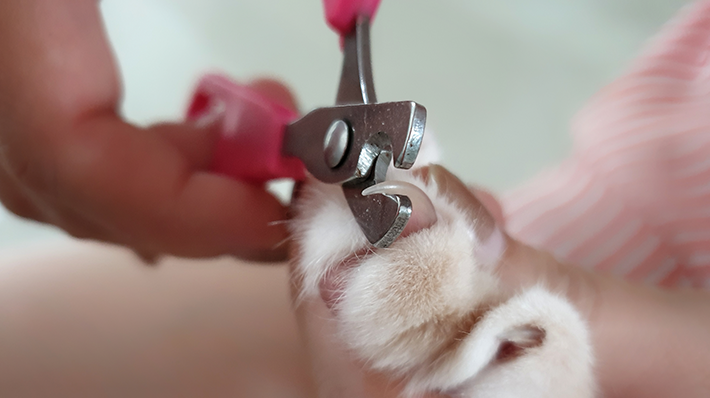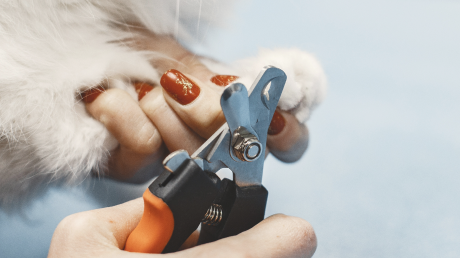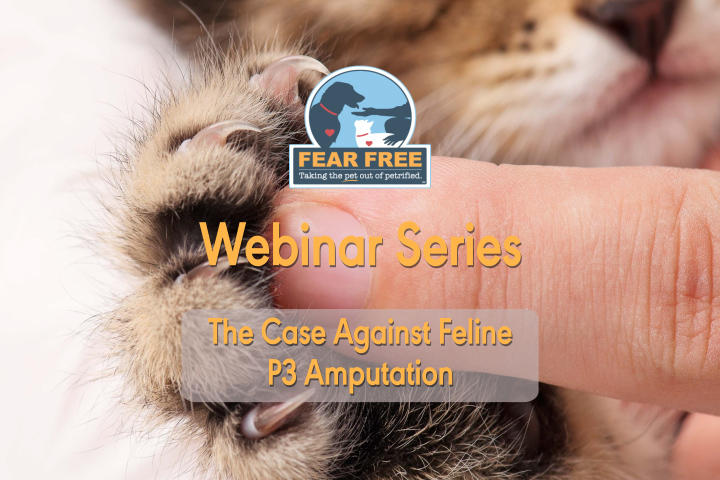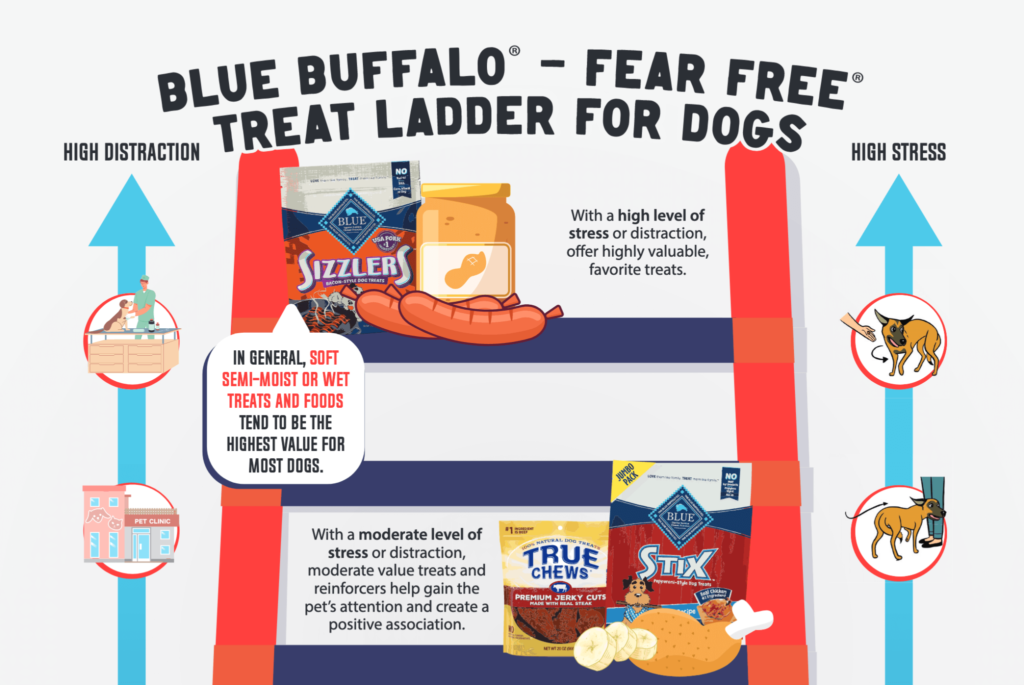
Blog Archives


I have been doing nail trims and anal sac expressions in my neighborhood for the last three years. Recently, one of my neighbors had asked on our community Facebook page if someone in the veterinary field could answer a question. Her dog was limping, and she didn’t know what to do. One of the neighbors offered her some doggy aspirin she had bought at the pet store. I quickly advised against giving unprescribed medications to her pet.
The conversation turned into a bullying session. One of my neighbors told me I shouldn’t try to act like a veterinarian. I have never felt so disrespected in the 15 years I have been in this career.
I shut down.
The next thing I knew, I was in my closet, crying, repeating to myself, “I don’t care, I don’t care anymore. Why should I care about others’ pets if I am going to be treated like crap? I’m done.”
I may have been improving with burnout, but I had just hit a whole new level of compassion fatigue.
I had a full weekend’s worth of nail trims to do and was going to make a little more than $200 in five hours. I didn’t care about the extra money anymore and canceled all appointments for the foreseeable future.
In tears, I explained to my husband why I had given up making extra money on the side. It was clear he wanted to help but didn’t know what to say or do. I knew I needed professional help.
Now I’m in the process of finding a therapist I can connect with. Until then, my family and I have adopted the following tools to help reduce stress:
–Simple Habit, a meditation app. My son uses it to fall asleep and settle down. He will ask to meditate to go to sleep now.
–A “coming home” routine: The spouse who is home first allows the second spouse to “finish coming home.” This gives them some quiet transition time to put their bags down, change clothes, and relax. When they’re ready to engage with the other spouse to prepare for the evening, they come out of the bedroom or wherever they choose to decompress.
–Boundaries with kids: I explain to my son that I need time to talk with his dad and ask him to sit quietly and watch a short show or play ABCmouse, a reading app. I also set timers in the house called, “Time to get ready for bed,” “Time for bed,” and “Quiet time is over.”
–Communication: When I start to feel like I’m getting anxious, I communicate how I am feeling and what I need to be able to come back down to earth.
Most of all, we continue to remind each other to slow down, be present, engage, and take time to listen to one another. My husband and I are working to improve our communication with our 3-year-old son so we can help him become an emotionally intelligent person, something his dad and I still work on ourselves.
We make time to have difficult conversations, and when we get into arguments, we try to make it a conversation, being mindful of raised voices, body language, and facial expressions. When necessary, we call each other out in a respectful way, in the moment, to help the other become aware of what they are doing.
The Fear Free way of thinking has helped me in so many aspects of my life. I use the techniques with my own son when he has doctor appointments as well as in everyday life. I communicate with him, making sure he knows what is coming up next, where we are going, what the doctor will do next. He is better behaved and calmer when things are explained to him, in most settings. I think that most children would respond to situations in a calmer manner when a Fear Free or Considerate Approach is taken.
In a work setting, my current team is emotionally intelligent, and all know the battle that I am fighting, which helps. Openly discussing things with your team can not only help you to become stronger but also to be seen with more respect and empathy than if you suffer in silence to spare everyone else’s feelings. Maybe someone on your team is suffering as well and doesn’t have the courage to speak up. Sharing your battles may give them strength to seek help for theirs. I wish more practice managers and owners would spend a day, at least, in a Fear Free certified hospital.
The most important message I want to send is that the battle of burnout is ongoing, and it’s not one you can win on your own. It doesn’t fix itself overnight or with a couple of therapy sessions.
Here is a quote I read frequently from Rachel Ashwell’s book “Painted Stories”:
“There is a time for taking action and creating work, and there is also a time for rest and seeking new ideas. Learning when you need space will help you to build a more sustainable creative practice.”
Check out our Fear Free on the House page for resources on wellness, quick tips, and more!
This article was reviewed/edited by board-certified veterinary behaviorist Dr. Kenneth Martin and/or veterinary technician specialist in behavior Debbie Martin, LVT.

Course Overview
The chin rest is a valuable cooperative care behavior that allows for a hands-off, consensual way to keep an animal still for veterinary exams, husbandry care, grooming, and other procedures. A chin rest serves as an indication from the animal that he is ready to engage in a handling or care procedure. By giving him a choice to “opt out,” even for a few seconds, chin rest empowers the animal to have a voice and greatly reduces his FAS.
In this course, you will learn the steps for training a solid chin rest behavior to an advanced level and discover its many practical, on-the-job applications.
This course includes three lessons:
- Lesson 1: Strategies and Equipment
- Lesson 2: Training and Problem Solving
- Lesson 3: Taking it to the Next Level
This course was written by Mikkel Becker, CTC, KPA CTP, CBCC-KA, CPDT-KA, CDBC.

Lindsay Pollard, FFCP (Veterinary), the hospital’s practice manager, says they began trying out some Fear Free methods after hearing about the concept. “A few of our staff members obtained individual certifications,” Pollard says. “After learning more and attending a few conferences where Fear Free was highlighted, we decided to go all the way.” Hanover Veterinary Hospital completed the program to become Fear Free certified in December 2018.
When deciding to become a Fear Free Practice, the biggest difference has been in the way he interacts with the animals after certification, says owner Jeremiah Bieszczak, DVM. “The biggest change has been reading body language and emotional state/stress level and addressing that instead of pushing through it. We are better able to read pets and have more tools and knowledge to deal with these situations.”
Many long-term clients are delighted with the constructive visits they’ve had with Fear Free, and new clients are thrilled with the difference between them and their previous veterinarian, says Pollard. Oftentimes they mention the care and compassion used when handling their pets. Pollard feels they’ve made much progress with many of the patients since becoming Fear Free certified.
Fear Free helps all pets, but scared pets often need Fear Free much more to turn their lives around. Pollard has one patient in particular whom she’ll always remember and says Fear Free methods changed everything for this dog.
The pet was a 14-year-old female shepherd mix. Sally, who has since passed away, desperately needed help. “Prior to our Fear Free certification, both Sally and her owner, Sara Zilz, dreaded coming to the vet. She also had some fear aggression and anxiety issues at home. She had a very high FAS and was fearful to the point of aggression,” says Pollard. “Our exams with her were very limited at best and it took several staff members to accomplish anything with her at all.”
Sally had been adopted by Zilz from the humane society when she was 9 weeks old. She didn’t notice any problems with Sally until she took her for training and Sally became spooked by large signs in the store hanging over her head. Then she began showing other fearful behaviors. Zilz says Sally disliked smoke from the grill and even hated when someone blew out a candle. She started having food-guarding issues and was even afraid of shadows on walks.
Zilz says she never thought about potential problems at the veterinarian’s office. “I had her boarded at Hanover. Dr. Bieszczak came out when I picked her up and nicely said something along the lines of ‘She needs to be medicated before we will take her for another boarding.’ This broke my heart. I did not realize she was that bad.”
A veterinary technician named Bobbi became Sally’s best friend when she was boarded. Bobbi would sit in her kennel with her and try to get her to come out. She wouldn’t even go outside to potty. Bobbi called Zilz several times and asked if she could do some things to help her. After that, Bobbi became Sally’s veterinary technician of choice.
After they became Fear Free certified, Bieszczak started Sally on fluoxetine, an anti-depressant. This medication was a game-changer for her. Pollard says they also started doing happy visits with Sally, using treats with her during exams and treatment, and including calming pheromone products during her happy visits and exams/treatment. They also tried to keep the same staff member working with her all the time, and kept detailed notes on her likes and triggers, constantly adapting their plan and approach to better suit Sally individually.
“She made more progress with each happy visit and regular visit until eventually she was happy to see several staff members,” Pollard says, “and she was happy coming into the building. Sally would readily accept most treatment from us with the help of some treat distractors and enforcers.”
“At one point, I felt everyone wanted to give up on Sally. Once I saw the Hanover Veterinary Hospital staff was not giving up on her, I knew things would be okay,” says Zilz.
This article was reviewed/edited by board-certified veterinary behaviorist Dr. Kenneth Martin and/or veterinary technician specialist in behavior Debbie Martin, LVT.
Sandra Toney has been writing about cats for over 25 years and is an award-winning member of Cat Writers Association and Dog Writers Association of America. She has written for many print and online magazines about cat health and behavior as well as authoring eight books. She lives in northern Indiana with her cat, Angel.

Course Overview
This course builds upon the foundational concepts covered in the Fear Free Nail Trims: Trimming Away the Terror course, which included finessed use of distractions, desensitization and counter-conditioning methods, and finely tuned choice of nail care tools.
An understanding of these foundational nail care concepts is recommended before starting this more advanced course. Cooperative care techniques taught in this course are useful both as preventive strategies to improve ease of nail care and as an interventional approach to address already existing FAS with nail care.
Since there is no “one size fits all” approach to nail care training that will work for every animal every time, this course aims to empower you with many options to choose from, depending on the animal you are working with at the time.
There are six short lessons in this course:
- Lesson 1: Communication & Consent Cues
- Lesson 2: Treat-Ment Stations
- Lesson 3: Chin Rest and Bucket Game
- Lesson 4: Offering Paws and Zen Down
- Lesson 5: Scratch Board Training
- Lesson 6: Problem Solving and Coaching Clients
This course was written by Mikkel Becker, CTC, KPA CTP, CBCC-KA, CPDT-KA, CDBC.

Jeannette Kincaid became interested in dog training over 20 years ago when she adopted a shy, fearful Border Collie/Australian Shepherd mix named Lydia. Unfortunately, Lydia was terrified of the world. Kincaid says she vowed to make a better life for her dog, so she started researching how to make Lydia feel as safe and happy as possible.
“It lit a spark in me and that passion has never subsided,” says Kincaid.
Going on to live 13 years, Lydia was never a social butterfly but, with Kincaid’s love and encouragement, she enjoyed seeing people and trying new adventures.
“Near the end of her life, we took a beach trip and she settled down on the patio for dinner with us,” Kincaid says, “It was truly one of the best moments of my life.”
Kincaid has now been a professional dog trainer for 15 years and, for the past nine years, has worked at Train My Dogs Austin and Onion Creek Kennels. Train My Dogs Austin is a positive training, boarding, and daycare facility in Austin, Texas, while Onion Creek Kennels in south Austin focuses on daycare, cat and dog boarding, and cat and dog grooming – all using positive reinforcement for the pet clients.
As head trainer at both facilities, Kincaid is currently enrolled in Animal Behavior College’s Grooming Instruction program, so she will soon become a professional groomer as well.
Fear Free certified in both training and grooming, Kincaid decided to take the courses when she began having an influx of training clients whose pets had been let go from their groomers for behavior reasons and needed a new facility for their dogs to be groomed.
Since Kincaid also groomed dogs, she began working with her training clients. “The Fear Free program has been very helpful in teaching me how to work with dogs in a manner that can help them grow to like grooming as well as a good foundation of knowing when to continue grooming and when to stop.”
Her training approach was already similar with the Fear Free program’s principles and techniques, says Kincaid, but what she lacked was concrete ways to illustrate and explain to clients and colleagues why she would continue working with a dog in some circumstances, and when she would stop and step back. The Fear Free certification program gave her great handouts with clear illustrations to help clients learn how to identify FAS (fear, anxiety, and stress). It has clear illustrations laying out various levels of stress such as when to push forward and when to stop and reduce stress.
The handouts have had a huge effect on client follow-through and understanding. She loves the continuing education available. “The Fear Free program has the best webinar on how to do a nail trim that I have seen,” says Kincaid. “Becoming Fear Free certified as a trainer and a groomer has really opened up a whole new subset of clients. It is also extremely rewarding to work dogs into grooming that were not able to be groomed previously. The clients are always so grateful.”
Kincaid says one case where her Fear Free certification was crucial was in working with a 6-month-old Schnauzer other groomers wouldn’t handle. He would start biting even while being brushed. Kincaid decided to take him on as a client because he was young and would need to be groomed for the rest of his life.
“We set up a training program where he came once a week and I worked on counterconditioning him to various tools and holds needed for grooming. We only ever pressed on if he stayed in the green level on the FAS ladder. We adjusted if his FAS started rising.
“We really leaned into the idea of need versus want,” she says, “meaning we stopped frequently, and he went home only partially done. But over a few months, we were able to complete an entire full groom and he went home looking great. This dog was labeled as a dog that couldn’t be groomed and now is able to be groomed and,” Kincaid says, “he loves his groomer.”
This article was reviewed/edited by board-certified veterinary behaviorist Dr. Kenneth Martin and/or veterinary technician specialist in behavior Debbie Martin, LVT.
Sandra Toney has been writing about pets for over 25 years and is an award-winning member of Cat Writers Association and Dog Writers Association of America. She has written for many print and online magazines as well as authoring eight books. She lives in northern Indiana with her cat, Angel.

Resource Guarding in Dogs: A Fear Free Approach
Resource guarding is a common problem in dogs with a wide variety of behavioral presentations. The condition is sometimes referred to as possessive aggression, and it poses a serious risk of injury when aggression is directed toward humans or other animals. Resource guarding can negatively affect the human-animal bond and the dog’s social relationship with other animals. In this webinar, Kenneth Martin, DVM, DACVB, will discuss prevention, establishing a diagnosis, and treatment recommendations.
Brought to you by our friends at Blue Buffalo.

Pheromone History
Scientists have long been fascinated by the notion of chemical communication between members of the same species. The first pheromone, a female silk moth secretion, was chemically identified in 1959 by German chemist Adolf Butenandt and his team.
Pheromones are odorless, colorless chemical signals used as a form of intraspecies scent communication. When detected they cause physiological and behavioral changes.
What Pheromones Do
Pheromones have a broad range of purposes that include alarm signaling, mating, social interactions, territory marking, and maternal bonding. Cats of all species send and receive messages via the pheromone message board.
Pheromones are secreted by specialized sebaceous or mucous glands on the body. For cats, these include facial glands (on chin, cheeks, and forehead), anal glands, paw pads, and mammary area.
When cats rub their heads against people, furniture, or objects, comforting pheromones are released from the cheek glands, marking this place as a comforting one for future feline reference.
Anal glands release pheromones in urine and feces that deliver messages regarding mating viability, expression of fear or stress, or territorial response (think urine marking or spraying). Scratching, a natural cat behavior, releases pheromones from the paw pads. Scratching delivers scent and visual cues about territorial ownership to other cats.
Mammary pheromones are activated in nursing mothers when kittens suckle. Kittens detect the pheromones, which produce a calming response. It also helps kitten and mother cat recognize each other if they become separated.
Pheromones are detected through the complex olfactory system and received via the nasal cavity, lined with millions of olfactory receptor cells. Once detected, cats tongue-flick the molecules to the vomeronasal, or Jacobson’s, organ, located on the roof of the mouth. This stimulates the flehmen response, which causes the mouth to gape open. It may look like a sneer, but this active process enhances pheromone perception. The pathway continues to the brain, which produces a behavioral or physiological response.
Natural pheromones perform a variety of important functions, but what about synthetic pheromones?
Using Synthetic Pheromones
Synthetic pheromones are lab recreations that mimic natural pheromones to help promote a sense of calm and security in stressful situations. The idea is to build a sense of confidence and prevent or alleviate fear, anxiety, and stress (FAS) and related behaviors such as spraying, scratching, and intercat aggression. They are not sedatives, essential oils, or medication.
The first companion animal pheromone product, Feliway Classic by Ceva, debuted on the pet market in 1996. This product, available in spray and diffuser, is a copycat of the feline F3 facial-marking pheromone deposited when cats rub their cheeks on objects, marking the area as safe. Feliway MultiCat, based on the cat appeasing pheromone (CAP), premiered in 2016. CAP originates in the mammary region of nursing mothers and provides a sense of safety, security, and harmony. It helps to reduce conflict and social tension in multi-cat households. Feliway Optimum is the latest diffuser product. FELIWAY Optimum may help to reduce scratching, urine spraying, tension and conflicts between cats, fears, and reactions to changes.
Synthetic pheromone products can be layered and used together in the clinic, shelter, or home. For example, Feliway Classic and Feliway MultiCat diffusers can be used together in exam rooms, shelter cat rooms, and in homes. The diffusers can also be used in combination with the spray Feliway Classic on towels or mats in an exam room, shelter cat living area, or on a cat’s favorite blanket or carrier. In the home, Feliway Optimum can be used in preferred scratching areas.
Other companies have launched similar products, and there are dog versions too. Dog and cat products can be used together to promote peaceful compatibility in multi-pet homes. Because pheromones are species-specific, cat pheromones don’t work on dogs and vice versa.
Does this mean clients or adopters can plug in a diffuser, snap on a collar, or spritz a blanket and expect immediate and magical behavior changes? No. Some cats may be more receptive to pheromones and alter their behavior, but pheromone products aren’t magic elixirs. The underlying cause of the stress must also be identified and resolved.
Synthetic pheromones are an aid in a behavioral plan, not a one-size-fits-all cure. “Synthetic pheromones can be successful when a client follows the written-out behavior plan,” says Rachel Geller, Ed.D., Certified Cat Behaviorist. “Sometimes the addition of synthetic pheromones allows the cat to better access the behavior program. Alone, the products usually aren’t enough to resolve the problem but when used with behavior modification they can resolve some of the emotional part of the problem for the cat. I never put a timeline on resolving cat behavior problems. In these matters, it’s best to go at the cat’s pace!”
Whether used in veterinary clinics, shelters, or homes pheromone products are designed to bolster a sense of calm, comfort, and positive feelings in stressful environments. It’s important to assess the environment from the cat’s perspective.
- Trips to the veterinarian usually induce high levels of FAS. Before the trip, advise clients to spray the carrier and a towel with the synthetic pheromone, and wait about 15 minutes for the alcohol to evaporate before putting the cat inside the carrier. Cover the carrier with the towel. The calming effect lasts four to five hours.
- Scratching and spraying. “Synthetic pheromones can be used if you have a cat who is peeing to mark his territory. Cats don’t pee on territory where they facially mark, so these products trick the cat into thinking he has already marked the territory as his own,” says Dr. Geller.
- Litter box avoidance. First, schedule a vet visit to rule out medical conditions. Recommend that clients set up the litter box arrangement to optimize cat-friendly preferences (size, location, number, preferred litter). Keep it clean! Owners should avoid punishing cats and add positive social interactions.
“Synthetic pheromones are especially helpful for those times where everything is completely new. Examples are moving to a new home, buying new furniture, or putting in new carpet. These products can be used on unfamiliar objects in the home to help a cat feel more safe and secure with them,” says Geller. Suggest that clients use the products in their home before bringing home a newly adopted cat to provide a sense of comfort and security upon arrival.
When a cat’s sense of wellbeing is disrupted, they can become stressed. Stressors can be environmental, physiologic, or social. Stress can be mild, moderate, or severe, temporary, or chronic.
Stress has a profound effect on emotional and physical health and behavior. Stressed cats may refuse to eat, become ill, or develop serious behavior problems. Minimizing stress is crucial to the health and wellbeing of cats. Synthetic pheromones can help to make cats feel safe and secure in their environment.
“Many times, cat behavior is 100-percent fixable and solvable through consistent behavioral interventions that are developed by looking at what is happening from the cat’s point of view. There is always a reason! If there is more going on, such as an emotional issue, stress, or anxiety, pheromones and even a pharmacological approach can be considered,” Geller says.
Pheromone products are versatile and easy to use, and they can be used in combination with a behavioral plan and medical treatments. While not magic, they may be the essential element your feline patients or shelter cats need to ensure a healthy, happy life.
Sources
Rachel Geller, Ed.D., Certified Cat Behaviorist
Gary Landsberg, DVM, DACVB, DECAWBM (CA). Fear Free webinar. The Science for Pheromone Therapy: Show Me the Evidence.
American Scientist. How Animals Communicate Via Pheromones. Tristam Wyatt.
https://www.americanscientist.org/article/how-animals-communicate-via-pheromones
Tristram D. Wyatt, Pheromones, Current Biology, Volume 27, Issue 15, 2017, Pages R739-R743,
ISSN 0960-9822, https://doi.org/10.1016/j.cub.2017.06.039.
https://www.sciencedirect.com/science/article/pii/S0960982217307765
Prior, Miriam Rebecca, Mills, Daniel Simon. Cats vs. Dogs: The Efficacy of Feliway FriendsTM and AdaptilTM Products in Multispecies Homes. Frontiers in Veterinary Science Volume 7, 2020, Pages 399. ISSN 2297-1769, DOI 10.3389/fvets.2020.00399.
https://www.frontiersin.org/articles/10.3389/fvets.2020.00399/full
This article was reviewed/edited by board-certified veterinary behaviorist Dr. Kenneth Martin and/or veterinary technician specialist in behavior Debbie Martin, LVT.
Ramona D. Marek, MS Ed, is an award-winning writer and 2017 recipient of the prestigious Fear Free Pets Award. She writes about pet care, health and behavior, and cats in the arts. She’s also the author of “Cats for the GENIUS.” Her feline muses are Tsarevich Ivan, a joie de vivre silver tabby Siberian, and Natasha Fatale, a full-time diva dressed as an “anything but plain” brown tabby. You can read more about Ramona and her work at www.RamonaMarek.com.

The Case Against P3 Amputation
While pain management is a vital part of Fear Free, it is even more important for cats who have been declawed. Join us and Robin Downing, DVM, MS, DAAPM, DACVSMR, CVPP, CCRP, founder of The Downing Center for Animal Pain Management, to learn about the trauma of feline toe amputation from the pain, biomechanical, and bioethical perspectives. This will energize your commitment to “just say no”!

Download this handy treat ladder guide from Blue Buffalo and Fear Free.